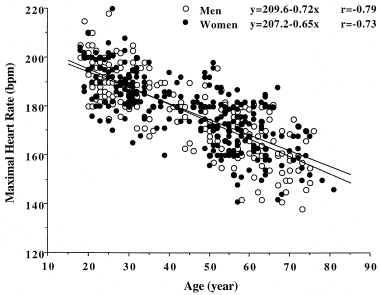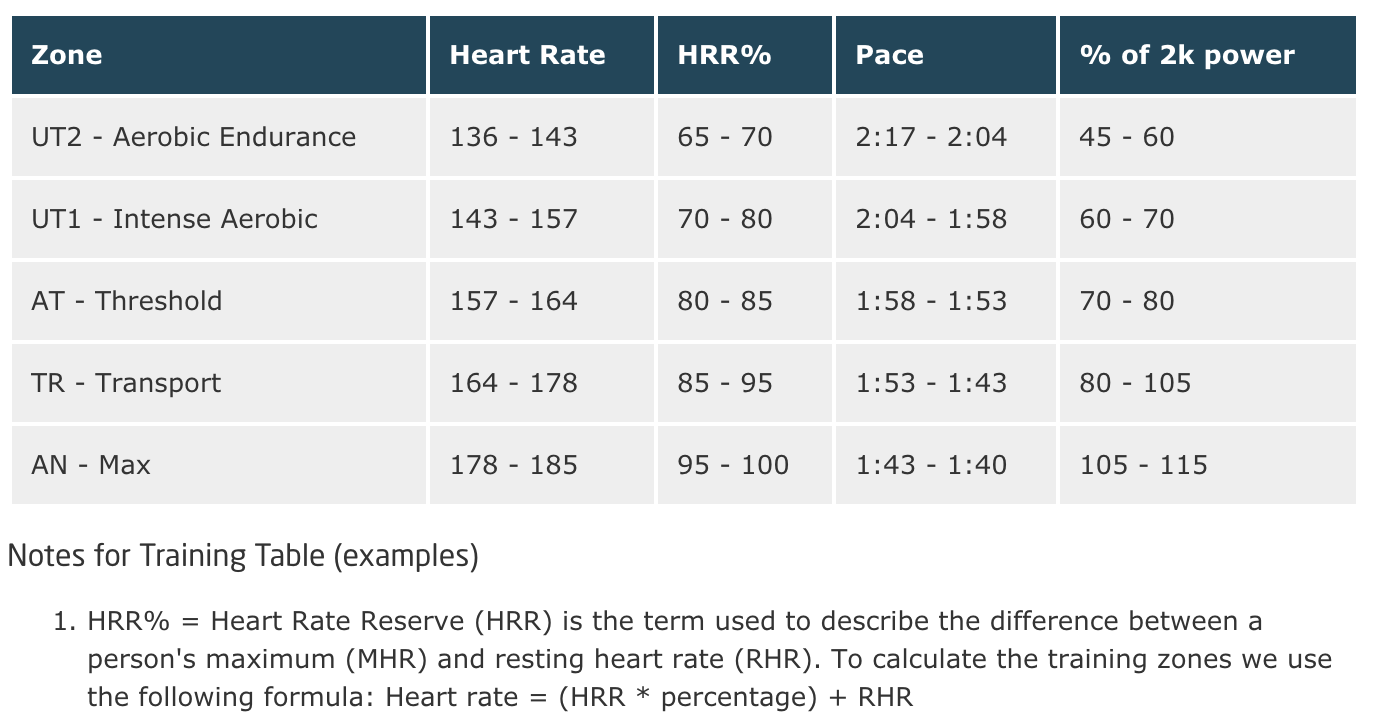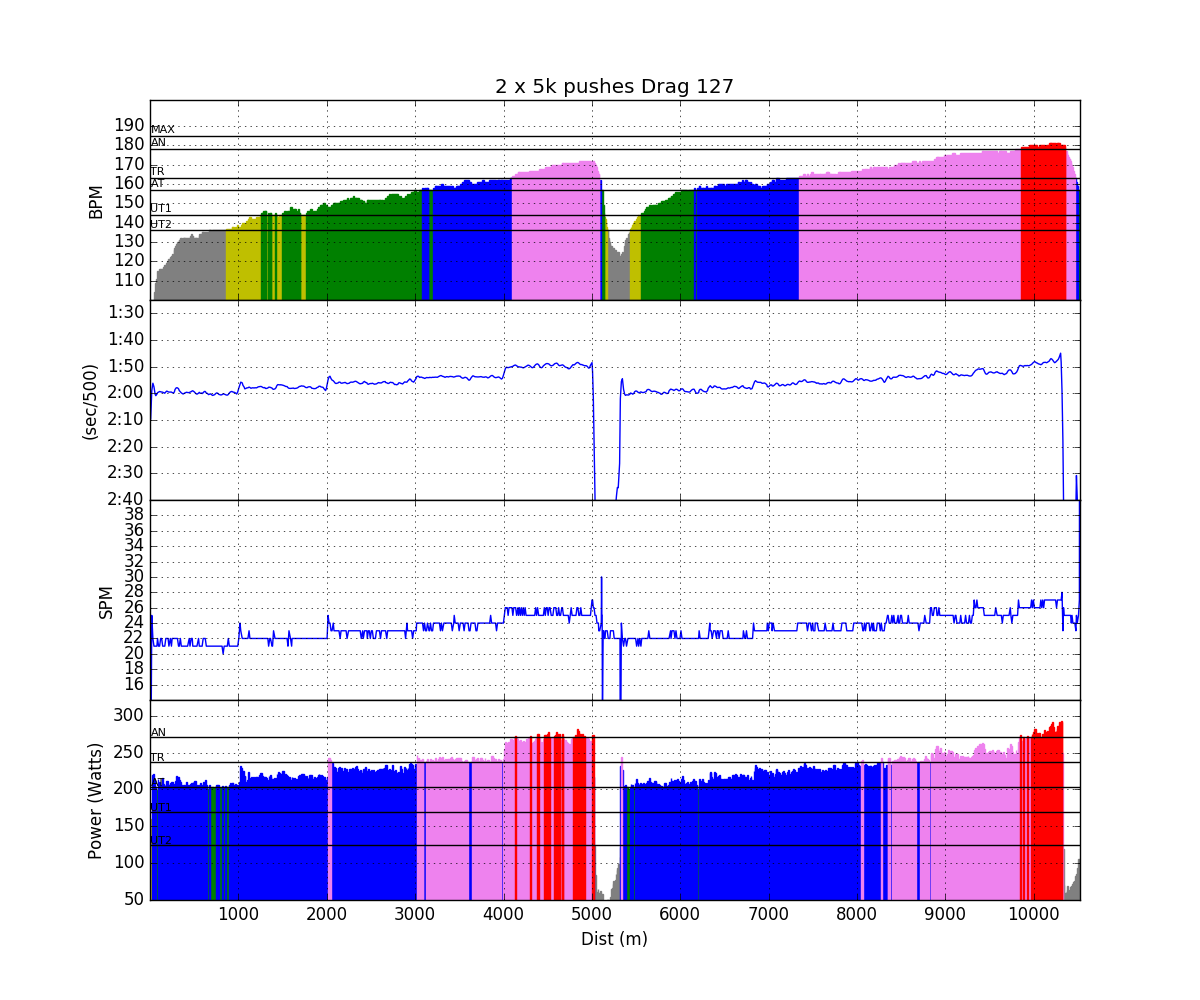
Knowing your maximum heart rate is the starting point for doing heart rate based training. Even if you you are not following a formal HR based plan, it can be useful to track HR statistics so you can keep track of training loads or to bore your spouse.
OK, the best place to start is by debunking this formula.
MaxHR = 220 – Age <— Don’t use this to figure out your maximum heart rate!
It’s wrong. A study looking at it in 2001 showed that even as a generalization, it’s wrong. The first problem is that the formula does not even fit the slope of the data. The study provided a handy revision which is, frankly, equally useless.
MaxHR = 208 – 0.7 x Age <— Don’t use this either!
Why is it useless? Because it has essentially no predictive value. Here is a figure from the Tanaka paper, referenced above.
Look at the data from any age you want. For example, look at the data around 55 years old. In the study, they measured MaxHRs as low as 140 and as high as 190. Sure the data has a general downward slope, but to get a reasonable estimate of your maximum heart rate, the trend line is not very helpful. The only way to figure out your maximum heart rate is to measure it.
Let’s start with the method they used in the Tanaka paper.
Maximal heart rate was determined by a continuous, incremental treadmill protocol, as previously described in detail by our laboratory (4). Heart rates were continuously monitored with electrocardiography. Minute oxygen consumption (V̇o2) also was measured using on-line, computer-assisted, open-circuit spirometry (4). After a warm-up period of 6 to 10 min, each subject ran or walked at a comfortable but brisk speed. The treadmill grade was increased 2.5% every 2 min until volitional exhaustion. At the end of each stage, the subjects were asked to rate their perception of effort using a Borg category scale (6 to 20 rating). Maximal heart rate was defined as the highest value recorded during the test. To ensure that each subject achieved maximal exertion, at least three of the following four criteria were met by each subject: 1) a plateau in V̇o2with increasing exercise intensity (<100 ml); 2) a respiratory exchange ratio of at least 1.15; 3) a maximal respiratory rate of at least 35 breaths/min; and 4) a rating of perceived exertion of at least 18 units on the Borg scale (5).
Now, to translate that into English.
- Start recording your heart rate
- Warmup for 6 to 10 minutes
- Start walking on a treadmill at a brisk speed
- Increase the grade of the treadmill by 2.5% every 2 minutes until your really tired.
- Really tired means that you are breathing 35 times per minute and as one definition of the borg scale describes it “your body is screaming at you to stop”
- Look at the collected HR data. The highest value recorded is your maximum heart rate.
(Sometimes HR sensors can have transient readings, so I suggest you look at the highest reading sustained for 5 seconds or so.)
One interesting factoid is that your maximum heart rate can be different for different sports because of body position, muscles used and other factors. So, doing this test on a treadmill is a good way to tell what your maximum heart rate is for race walking. We care about rowing, we care way too much about rowing, so it is better to measure your maximum heart rate on the rowing machine. (Insert standard disclaimer about not doing strenuous exercise without permission from your doctor and your spouse, etc, etc)
Modifying this protocol for to use on an indoor rower very easy. So easy that the Australian Institute of Sport has done it for you. In this document.
Here is the link.
The test is very simple. Based on your most recent 2K pace (or an estimate of it), you do 7 – 4 minute steps starting at a low power (slow pace) and increasing by a set number of watts for each step. You start recording your heart rate and you do the first 6 steps without a break and the sixth step is about 5 seconds slower than your 2k pace. After 24 minutes of rowing, that pace will feel pretty hard and your heart rate will be reasonably high.
At the end of the 6th step, you take a 1 minute rest and get ready for the fun part. At the end of the one minute rest, you do a racing start and row as fast as you bloody well can for four minutes. This step should be at or faster than your 2k pace (unless you can do a 2k under four minutes, but then you should report to Concept2 and WorldRowing). At the end of that step, you review your HR data for the highest value sustained for 5 seconds. Use that as your maximum heart rate.
Your maximum heart rate will not change much with training. If you do a ton of endurance training for long periods of time, your maximum heart rate may drop a couple of beats because the stroke volume of your heart gets much larger, but it won’t change much. What you might see, however, is that you discover that this initial measurement of your maximum heart rate is too low. It certainly was the case for me. As you do hard workouts, especially when you do a long time trials like a 6K, 30 minutes or 10K, you might see heart rates higher than what you measured in this test. If this happens, update your MaxHR with the new number.
Heart Rate Reserve (HRR)
Many training plans use a concept called Heart Rate Reserve (HRR). Heart Rate Reserve is the range of your heart rates from complete rest to maximum.
HRR = MaxHR – RestHR
This brings up the concept of RestHR. This needs to be measured too. Luckily it’s a lot easier to measure than MaxHR. All you need to do is put on a HR sensor first thing in the morning, before you even get out of bed and record data for a couple of minutes. Your RestHR is the lowest sustained 5 second reading.
RestHR actually does change a fair amount with training (and with tiredness, lack of sleep and other things a serious athlete should monitor) so it’s a good idea to measure your resting heart rate a couple of times per season, and update your profile.
What to do with your MaxHR and RestHR
On your user profile page on rowsandall.com, you will see a set of entry fields under a heading of “Heart Rate Bands”
You can enter your resting HR and your maximum HR into the corresponding boxes. The other boxes use the definitions of HR training bands from the Indoor Sport Services Indoor Rowing Training Guide. Here is a helpful table from the Interactive Training Programme that shows you the applicable HRR%s for the training bands.
To fill in the blanks, use the following formulas:
- UT2 Band Lower HR = (65% * HRR) + RHR
- UT1 Band Lower HR = (70% * HRR) + RHR
- AT Band Lower HR = (80% * HRR) + RHR
- TR Band Lower HR = (85% * HRR) + RHR
- AN Band Lower HR = (95% * HRR) + RHR
Once you’ve filled in the blanks, then you will get HR plots that show how you responded to a specific training session. Like these.






